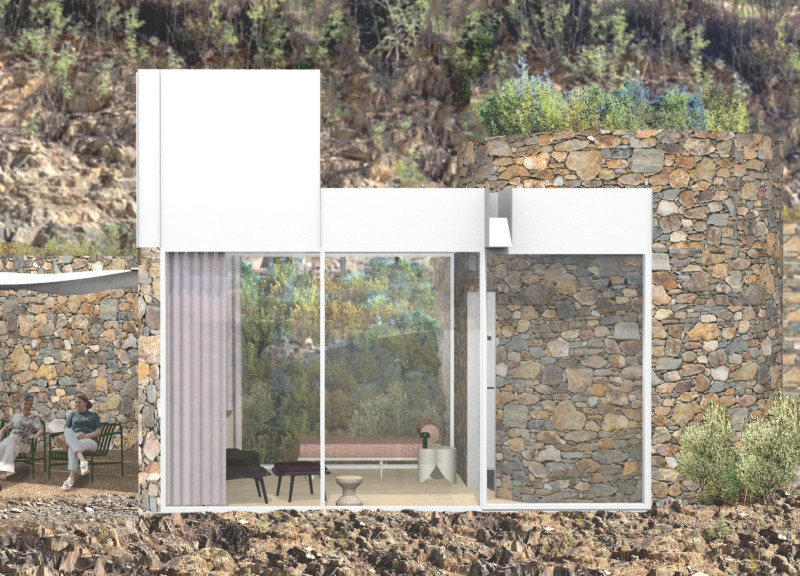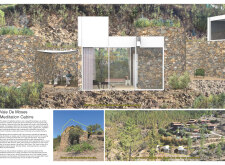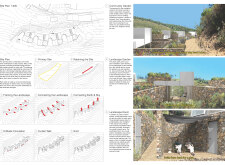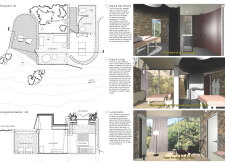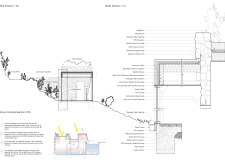5 key facts about this project
The core representation of this project lies in its commitment to sustainability and simplicity, integrating seamlessly with the natural surroundings. Each cabin is constructed primarily from local stone, which not only aligns the structures with the earth but also enhances thermal properties, allowing them to maintain comfortable temperatures throughout the year. The choice of materials reflects a minimalist aesthetic, as well as an ecological consciousness, supporting the overarching goal of reducing environmental impact.
Functionally, the Vale De Moses Meditation Cabins serve as a sanctuary for those seeking solitude or a space to engage in communal activities. The architectural layout includes distinct areas designed for specific uses, such as meditation and social interaction, providing an optimal arrangement that encourages both individual reflection and group connection. By maintaining a balance between private cabins and communal spaces, the design invites users to experience both isolation and belonging, essential aspects of personal growth and meditation.
The spatial organization within the project is carefully thought out, featuring a blend of 'Earth Rooms' and 'Sky Rooms', each providing differing experiences. Earth Rooms offer a grounded connection to the landscape, while Sky Rooms encourage an expansive view and a feeling of openness. This deliberate contrast in space enhances each user's experience, catering to varying needs for introspection or community engagement. Pathways interconnecting the cabins serve as arteries of movement throughout the site, inviting exploration and contemplation as one moves between personal and shared spaces.
One unique design approach in this project is the integration of retaining walls that not only stabilize the slopes but also create visually appealing outdoor areas that seamlessly blend with the environment. These stone walls serve as both functional and aesthetic elements, enriching the user experience while also promoting ecological diversity. Furthermore, the use of vegetative roofs adds another layer of innovation, helping to manage rainwater, insulate the cabins, and contribute to the overall biodiversity of the site.
The design employs passive solar techniques, allowing for natural light and ventilation to influence the internal environment effectively. Operable windows and shaded areas are strategically placed to optimize comfort, minimizing the need for mechanical heating or cooling systems. This sustainable approach not only enhances the users' experience but also underscores the architecture's commitment to environmental stewardship.
Overall, the Vale De Moses Meditation Cabins exemplifies a thoughtful architectural design that harmonizes human habitation with the natural landscape. By prioritizing ecological materials and sustainable practices, this project represents a forward-thinking approach to architecture that resonates with a growing desire for mindfulness and connection to nature. The blend of solitude and community, combined with the careful detailing of functional spaces, makes this project a noteworthy example of contemporary design.
For those interested in deepening their understanding of this architectural venture, exploring the architectural plans, sections, and design ideas would provide further insights into the thoughtful decisions that shaped the Vale De Moses Meditation Cabins project. The careful orchestration of space, materials, and environmental considerations all contribute to the tranquil atmosphere that this project successfully embodies.


